Hans van Rappard
6 ― From: Rappard, H. van (2009). Walking Two Roads ― Accord and Separation In Chinese and Western Thought. Amsterdam: VU University Press. Chapter 2, pp. 65-71.
part 1 – part 2 – part 3 – part 4 – part 5 – part 6 – part 7 – part 8 – part 9 – part 10 – part 11 – part 12 – part 13 – part 14 – part 15 – part 16 – part 17
The fires and I
We have twice come across the term reflection. It was first mentioned in connection with Buddhism and then with Descartes’ method of doubt. In both cases reflection was seen to involve the notion of the I. But whereas in the former one is cautioned not to believe and cling to it, Descartes had no qualms about it. To modern Westerners, self-reflection and self-consciousness, plus the notions of self, ego, or I appear totally obvious and no one in their right mind would have any suspicions about it.
According to the aggregate scheme, reflection is a matter of consciousness reflecting its own objects. Taken by itself the reflecting function of conscious is neutral. As long as there is just reflection everything is fine but we know that this state rarely obtains and that when it does it is unlikely to last. The reason for this sorry state of affairs may to some extent be found in the fourth aggregate, the formations that intervene and distort the interaction between senses and consciousness. We have already been through this but the story is by no means complete. Rather to the contrary; the most important part is still missing.
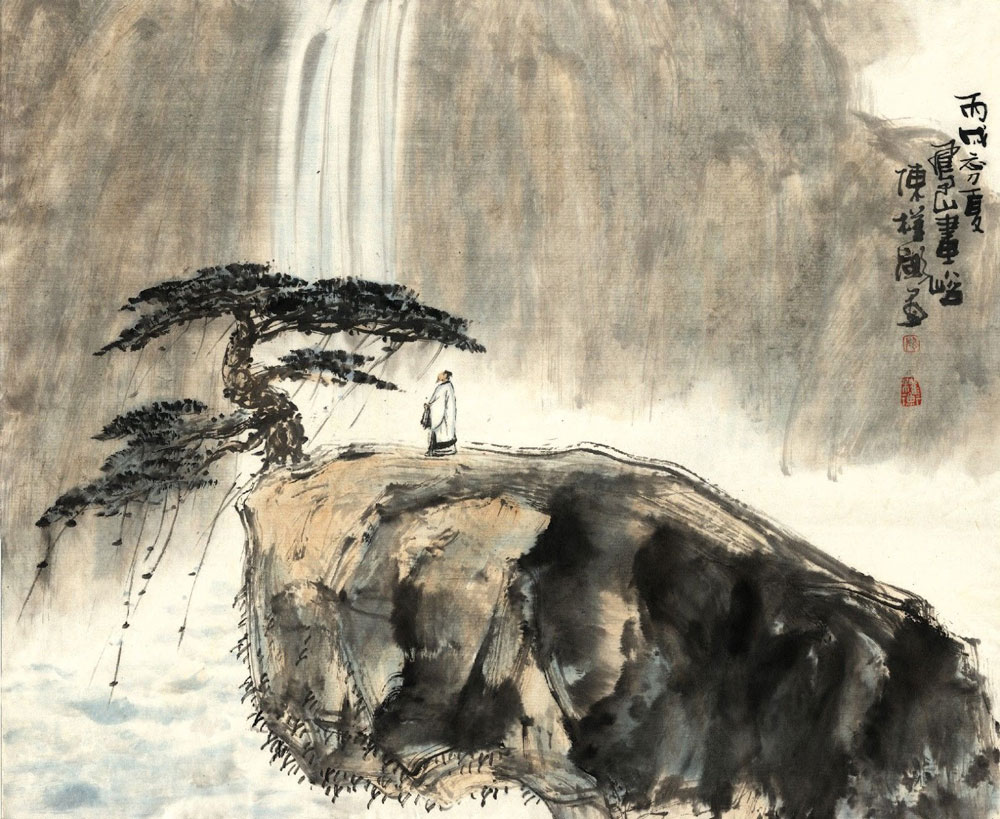
Distorting formations
The fact of the matter is that the distorting formations arouse something that is abysmally deep entrenched in the heart-mind. I am referring to an aspect of it that has already been mentioned but has not yet received due attention, the fires. The fires may be thought of as emotional energy. To call them psychic energy would be not so much wrong as misleading since for many of us the term psyche will probably carry rather intellectualistic connotations. But to conceive of the fires as intellectual would unduly water down their tremendous energy. In the face of the energy of the fires the ego is just helplessly and hopelessly overwhelmed.
According to the prevailing division of labour in the heart-mind the formations determine how things are seen by the ego, while this distorted, I-coloured perception may then stoke up the fires. But these can arise only if there is the delusion of a separate and isolated self. An oft-used example involves a rope on the street: when the formations cause one to perceive it as a snake, it is not this miss-perception as such but the aroused (fear) emotion that makes one jump. The most important formations are the wilful intentions. To wilfully intend a certain action involves choice and partiality since it entails that ‘this’ is preferred over ‘that’. It is impossible to want something in a impartial way, that is, without excluding something else. Moreover, partiality forges a link between that thing and me.
“Where your treasure is, there your heart will be as well”
To take but one from an endless range of examples, to the glee of the advertising industry cars tend to be sold because of a host of irrational notions that our wants have attached to them but that actually have nothing to do with cars as such. When the adage ‘sex sells’ is exploited by putting in glamorous but irrelevant car girls, my perception of cars as just a means of transport is likely to be distorted. It will be clouded by, say, the anticipation of what my friends will think of the car, and me, and the smooth ego-less activity of the senses is disrupted.
When volitional intention arises this signifies that the ego is fired by the appetites and therefore unable to respond objectively to what happens to present itself. As an old saying has it, ‘where your treasure is, there your heart will be as well’, and it appears to have lost none of its significance. If my particular treasure happens to be a car, that is most certainly where my heart will be too.
Wordsworth would probably have said that I had given my heart away. But wait a moment, ‘given’ …? Did I deliberately give my heart away? I would rather say that I was robbed of it. Anyway, my sense of ‘I’ surely is where my wants are (or my rejections). What is more, once the fires really flare up the self is lost, having been carried away by their energy. But the appetites can also be, and most often are very subtle.
The simple everyday ‘oh, no’ when the alarm clock rings is an example, as are the ever so slight ‘no’s’ at the demands issued every moment by the situation one happens to find oneself in. But whether the appetites rage or nag, they have ‘me’ rather than the other way round. Nothing is left of the I as a separate entity; it is overwhelmed by the fires, which, incidentally, demonstrates that the Buddhist consciousness is much larger than the self.
Indeed, burning rage or passion is an oft-used expression for this state of the heart-mind and experience shows that it puts the matter well. No trace is left of the reflecting and controlling self; I am no longer there, supervising operations. Rather, the ego is besides itself. Taken literally, being besides oneself is a difficult feat to pull off but talking about the heart-mind has always required abundant use of metaphor and paradox. Thus, when the fires have been stoked up one is ‘carried away’ and ends up ‘besides oneself’ so that afterwards, having ‘pulled oneself together’ again it is not possible to retrieve what it was that ‘came over me’.
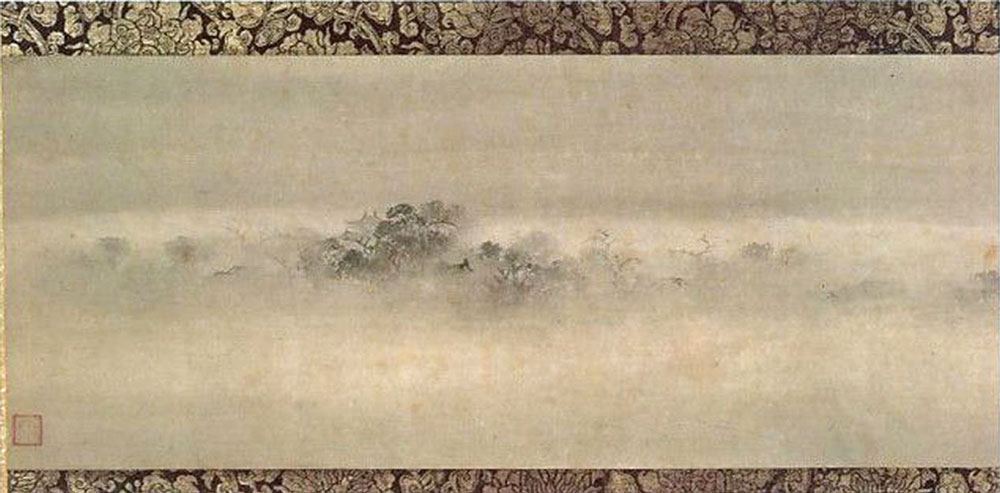
Thinking and I
It was mentioned that the ego comes most forcefully to the fore in volitional intention. In its turn however, intention will probably show most often in thinking, although actions may also be intentional. Thus, it would seem to follow that thinking is perforce I-coloured and distorted. Please note that given the lack of an objective-subjective distinction in the aggregate view the word subjective, which from the Western perspective would be the right word is avoided. But that is not our main concern. Rather, what needs consideration is that although thinking will indeed most often be distorted by the hallmarks of the appetites, picking and choosing guided by the question ‘what’s in it for me?’, this is not necessarily so.
It is possible, the aggregate scheme teaches, to think clearly. Simply put, when thinking ensues from a direct response to the situation at hand it is not wilfully intended. For instance, planning the various things to do for the day ahead is a response to the imminent problem of how to get skilfully through this particular day. But on the other hand, anxiously planning for difficulties that may or may not arise in the coming days, let alone weeks, months or years is an instance of the ego trying to maintain itself in the face of dire uncertainty.
Scientific thinking might provide another example. Even though the topic of investigation may have been determined by its current favour with the research community and its hoped for capability of advancing one’s career, this does not necessarily have a bearing on the ensuing process of hard, ‘objective’ thinking. In this case too, it is the direct response to the problems confronted at every step of the investigation that determines whether or not it is an ego-driven affair.
The heart-mind and I
There is more to be said about the fires. Until not very long ago, people tended to be wary of the appetites and were generally cautioned against them. No longer. Way back in the 1940s when the standard of life was almost primitive compared to what nowadays is simply taken for granted Thomas Merton observed that
“there is no evil that is not fostered and encouraged for the sake of making money.”[3]
This does not seem to have abated. Rather, blind consumption and rapacious production have become indispensable for the maintenance of economic growth. The ancient ways of life on the other hand, took a dim view of the fires and taught a wide array of means to keep them in check, sometimes drastically, sometimes less so.
For instance, with rare exceptions all paintings of St. George depict him as slaying a dragon. According to the legend, the beast had ravaged the country and every day it demanded two sheep. But when sheep were lacking they had to be substituted by human victims. One day the lot fell to the king’s little daughter. Fortunately however, when she was on her way to the dragon St. George chanced to ride by and slew it. One notes that it is quite in line with the opposites being seen in the West as conflicting and requiring the elimination of the unwanted one, that St. George killed the evil beast rather than resorting to less drastic measures.
Another instance of this attitude may be found in the Stoics, who considered it essential to exterminate the emotions (chapter five). In China on the other hand, the followers of the Way were not directed to kill the beast but to gentle it. The beast to be gentled ― the emotional energy showing as the appetites firing the I ― is often portrayed as a bull (though translated as ox).
“The herdsman must not for a moment drop whip or reign,
Or the bull would stampede into the dust.
But if patiently tamed and gentled
He will follow the herdsman by himself without fetter or chain.”[4]
To gentle the beast

The gentling process basically comes down to an emptying out of the I-delusion until a state of no-I obtains. When this has been achieved, the six senses are not blinded by the fires or, put differently, they are not painted over anymore by the likes and dislikes and the delusion of a separate I. The herdsman/self not being separate from the beast/energy anymore can trustingly ride it, or rather be carried by it. As an old text says,
“sitting back to front on the bull he comes home with a joyful heart.”[6]
One sees that as is so often the case in the Buddhist literature, the concepts used revolve around each other and cannot meaningfully be used in isolation. After all, it is the I-delusion, trying to maintain and shore itself up that prompts the likes or dislikes of this rather than that, producing the volitional intention in which it comes to the fore.
In other words, all revolves around the notion of no-I. Obviously then, gentling the beast cannot be achieved by the I. Rather, the ego is precisely the distortion that blocks the Way. The gentling of the bull is therefore essentially a matter of giving away the ego ― giving it away into the only ‘thing’ we have got, the present moment. One way, among countless other ways to put this would be to say that it is a matter of thinking and doing things in a state ‘before I’, that is, before wilful intention has arisen.
The pure mirror
This state may be achieved and maintained by letting the senses just reflect. An oft-used Buddhist metaphor ― but also found in Zhuangzi ― is the pure mirror that simply reflects everything that falls on it without grasping or refusing any of it. As long as the fires do not arouse the fourth aggregate one is just aware of things and leaves it at that. No thoughts arise on what might be in it for me and whether it should be sought or shunned. There is just choiceless, bare awareness.
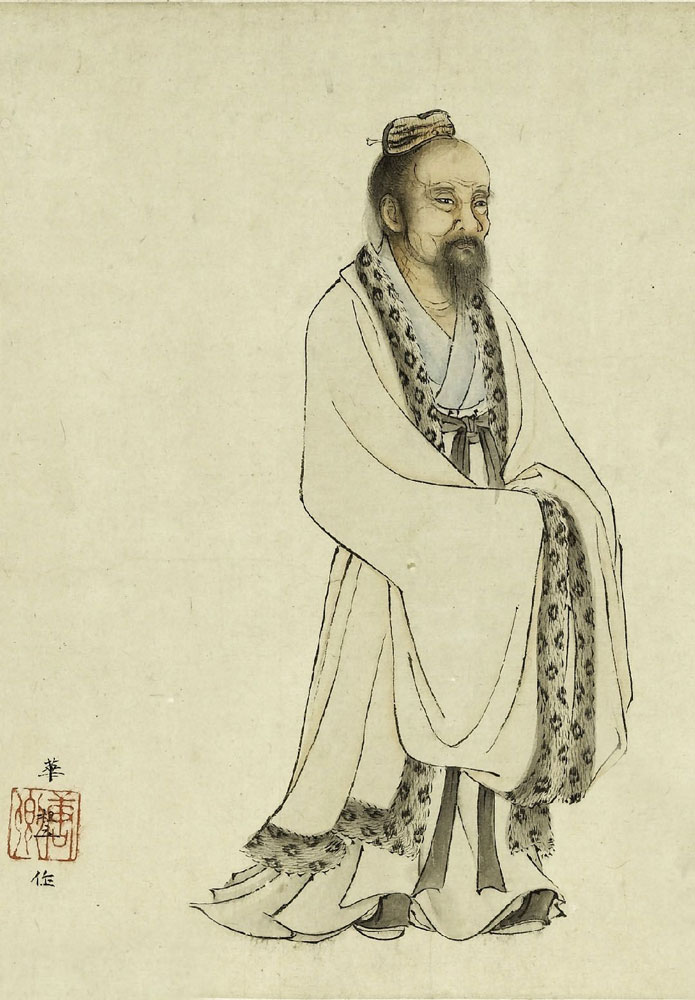
However, such naked ‘that’ consciousness cannot be achieved in the mind as a purely mental realm. It can only be achieved in the lived body, that is, the body as it is lived prior to the abstract separation of body and mind. Hence, it can be achieved only in the heart-mind.
An oft-mentioned example is swimming. Learning to swim, children and adults (but not young babies) tend to be afraid of the water and not to trust it to carry them. Desperately trying to stay afloat, they go inexorably down. It is their very trying that gets in the way but as long as they are afraid of the dark depths below they won’t be able to stop it. This is impossible by a deliberate act of will. In Buddhist words, and the Daoists would agree, it is impossible to intentionally get rid of I. But it is possible to let go of the ego by trusting the water and handing oneself over to it.
One might be tempted to think that bypassing the ego is a matter of attention or focusing but these are easily misleading words. In common use attention refers to the concentration of the mind on a particular thing, that is, it refers to a focused and inevitably selective kind of attention, which may be accompanied by a tensing of the muscles. But what is meant in our context is rather a certain whole-heartedness, a fully being one of the heart-mind with what happens to be done. Asked why he is so successful Zhuangzi’s hunchbacked cicada catcher answers,
“I’m aware of nothing but cicada wings. Not wavering, not tipping, not letting any of the other then thousand things take the place of those cicada wings ― how can I help but succeed?”[8]
State of samadhi
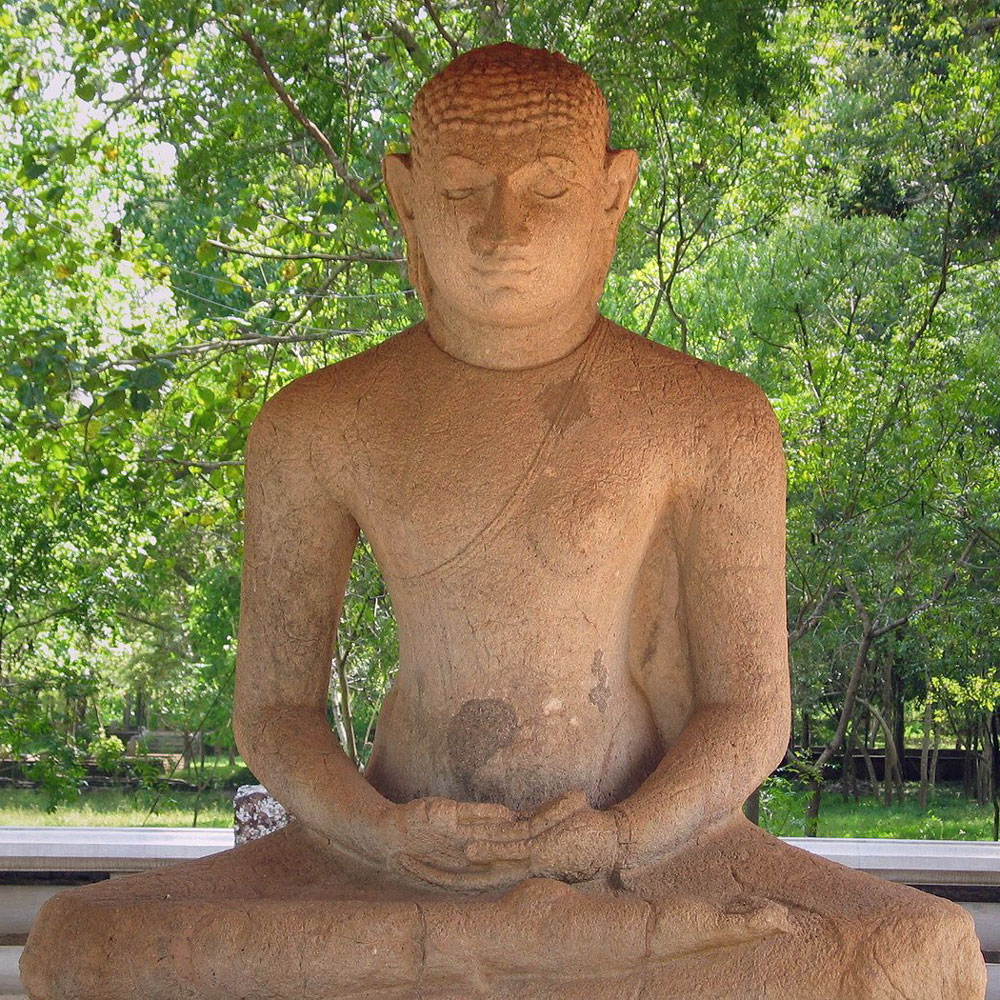
Indeed, when the heart-mind is fully in accord with the catching or whatever else one is doing, the I-feeling of separation is no longer there. In such a state of samadhi (this Sanskrit word is a combination of sam, together, a, towards, and dhi, bringing) a bodily roominess, a spaciousness in the belly may be sensed. Tersely put, while ego means being at odds, samadhi means being at one.
The difference between the two kinds of attention may be clarified by juxtaposing two metaphors. The first bears on selective, focused attention, which may be likened to a light beam, now lighting this up, then something else. The second metaphor on the other hand, which regards the kind of wholehearted attention we are concerned with is rather like a wide mirror.
The valley, “open and broad”
The Daoist image of the valley, “open and broad” may also come to mind.[10] The metaphors entail that whereas the former type of attention may surely be called concentration, in the context of open-, broad-, or whole-hearted attention this is actually a misleading word that had better be avoided. The same applies to the word mindfulness, which might well be replaced by open-heartedness or the likes of it. Failure to properly distinguish between focused attention on the one hand, and open-hearted attention on the other hand, may lead to highly deceptive descriptions of the mindfulness-of-breathing practice as beginning by
“focusing the attention on the tactile sensations of the respiration [ followed by a] more narrow (sic!) focus on the sensations of the rise and fall off the abdomen [while]in the most highly focused exercise, the attention may be directed to the sensations of the passage of the breath at the apertures of the nostrils.”[11]
There is one more point. When the physical senses reflect purely, that is, when the bewildering heap of materials stored in the fourth aggregate do not kick in, things are perceived without the slightest colouring by I, just as they are. But what could pure reflection mean for the sixth consciousness? Put differently, reflecting purely, that is, reflecting in the absence of any mental objects, what could there be to reflect? There would be no particular thing, indeed, no-thing, nothing. The mirror would be empty.
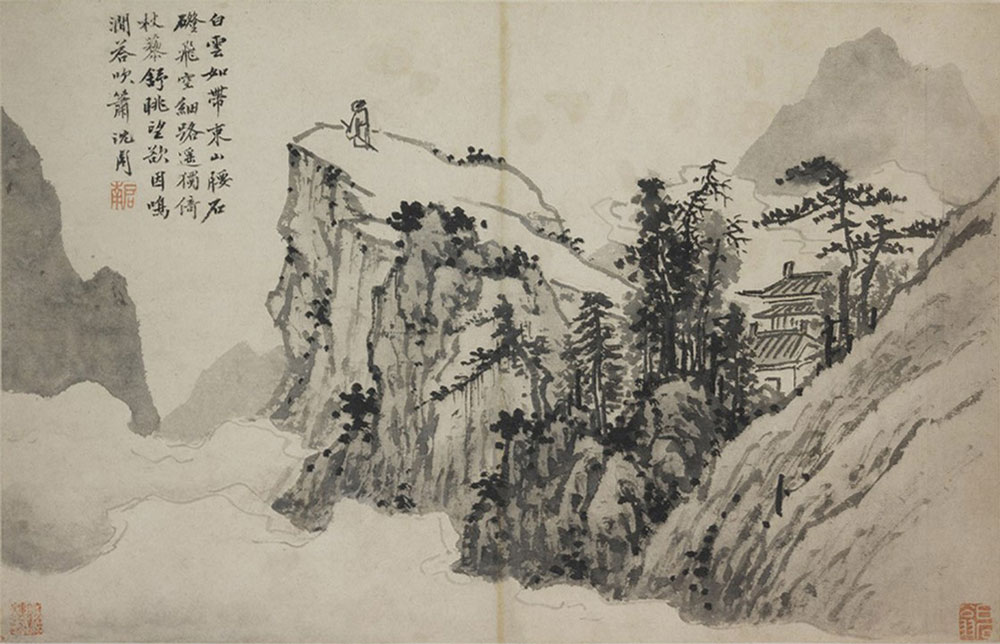
Conclusion
This, I think, puts a fitting end to our attempt to look at the Chinese mind through Buddhist eyes. Although the Chinese were not much interested in the inner workings of the mind, our exercise has not been entirely in vain, I believe. The results may be summarised as follows:
In contradistinction to the contemporary Western view of the mind, in Buddhism:
- Consciousness is conceived of as a process, not an entity. It will be seen that this also holds for Confucianism and Daoism. Although the process view is not entirely lacking in the West, it is far less prevalent there.
- The concept of consciousness comprises intellect, feeling, and emotion. This is why it is called, heart-mind. The following chapters will show that this obtains in both Confucianism and Daoism.
- The concepts of consciousness on the one hand, and self, ego, or I on the other, do not coincide. Consciousness is far more comprehensive than the ego. This will also be the case in Daoism but is less salient in Confucianism. However, Buddhism goes further than either Confucianism or Daoism by maintaining the illusory nature of the ego.
- The pre-intentional state of the heart-mind is stressed. This will also be found in Daoism but, although not entirely absent, considerably less in Confucianism.
- Bell, D.A. (2008). China’s new Confucianism. Princeton: Princeton U.P.
- Blowers, G., Cheung, B.T. & Ru, (2009). Emulation vs. indigenization in the reception of western psychology in Republican China: An analysis of the content of Chinese psychology journals (1922- 1937)-Journal of the History of the Behavioral Sciences, XLV, 21-33.
- Bourke, V.J. (1964). Will in Western thought. New York: Sheed and Ward
- Chan, Wing-tsit. (1963). A sourcebook in Chinese philosophy. Princeton: Princeton U.P.
- Ch’en, K.K.S. (1964). Buddhism in China. Princeton: Princeton U.P.
- Conze, E. (Transl.). (1988). Buddhist wisdom books: Containing the Diamond sutra and the Heart sutra. London: Unwin.
- Forke, A. (1927). Die Gedankenwelt des Chinesischen Kulturkreises. München: Oldenbourg.
- Haldane, E.S. & Ross, G.R.T. (Transls.). (1973). The philosophical works of Descartes, I. Cambridge: Cambridge U.P.
- Hansen, C. (2000). A Daoist theory of Chinese thought. New York: Oxford U.P.
- Hume, D. (1739-40/1996). Treatise of human nature. Thoemmes Press.
- Krailsheimer, A. J. (Transl). (1995). Blaise Pascal: Pensees (1670). London: Penguin Books.
- Merton, Th. (1948/1975). The seven storey mountain. London: Sheldon Press.
- Nakamura, H. (i960). The ways of thinking of Eastern peoples. Tokyo: Printing Bureau, Japanese Government.
- Reichelt, K.L. (1928/2001). Truth and tradition in Chinese Buddhism. New Delhi: Munshiram Manoharlal Publ.
- Schwartz, B.I. (1985). The world of thought in ancient China. Cambridge (MA): Harvard U.P.
- Trevor, M.H. (Transl.).(1969). The ox and its herdsman. Tokyo: The Hokuseido Press.
- Waley, (Transl.). (1992). The Analects of Confucius. New York: HarperCollins.
- Wallace, B.A. & Shapiro, S.L. (2006). Mental balance and well-being: Building bridges between Buddhism and Western psychology. American Psychologist, 61, 690-701.
- Watson, (Transl.). (1968). The complete works of Chuang Tzu. New York: Columbia U.P.
- Watson, (Transl.). (2003). Zhuangzi — Basic writings. New York: Columbia U.P.
Notes
[1] Source: Zhuangzi contemplates a waterfall
[2] Souce: Muxi — Evening bell from mist-shrouded temple, from the handscroll “Eight Views of Xiao and Xiang” Hanging scroll. Ink on paper, 13th century
[3] Merton, 1975, p. 133
[4] Adapted from Trevor, 1969, p. 13
[5] Source: Five Bulls – Han Huang (723-787)
[6] Adapted from Trevor, 1969, p. 16
[7] Source: Zhuangzi
[8] Watson, 1968, p. 200
[9] Source: The Samādhi Buddha, Anuradhapura, Sri Lanka
[10] Laozi, ch. 15, in Chan, 1963, p. 147
[11] Wallace & Shapiro, 2006, p. 695
[12] Source: Poet on a Mountain Top — Shen Zhou (1427-1509)




